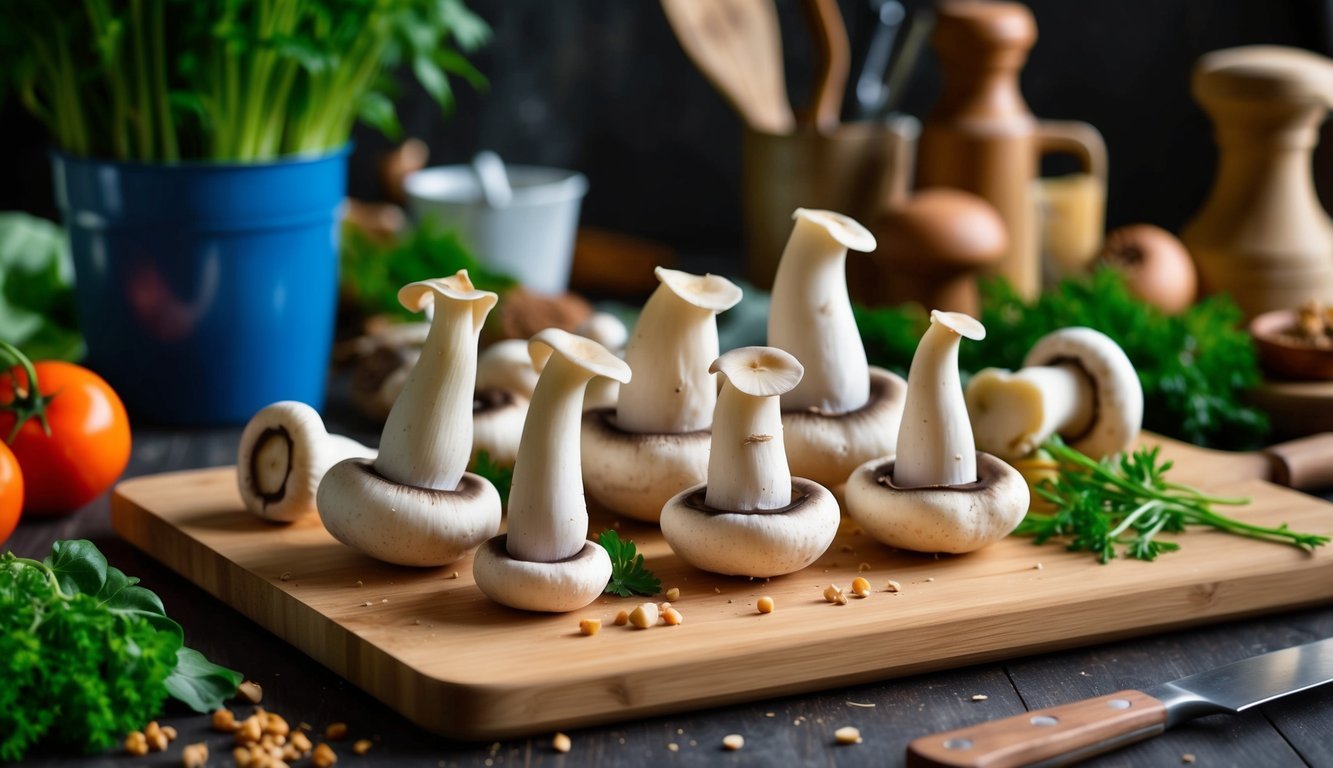
King Trumpet mushrooms, also known as king oysters, are celebrated for their juicy texture and robust flavor, making them a delicious and nutritious addition to any dish.
If you’re eager to incorporate these culinary gems into your meals, the good news is that you can easily grow them at home.
Mushroom enthusiast Matt Dursum shares essential tips on how to cultivate and nurture these delightful fungi.
Exploring King Trumpet Mushrooms
King Trumpet mushrooms are celebrated globally for their delectable taste, impressive size, and numerous health benefits.
These fungi belong to the Pleurotus genus, which includes over 200 edible species.
Renowned for their versatility in the kitchen, King Trumpets are not just a treat but also offer nutritional and medicinal advantages.
Known by various names like king eryngii, royal trumpet, and French horn, these mushrooms usually appear individually rather than in clusters, which adds to their culinary prominence across diverse cuisines, including Japanese, French, Chinese, and Italian dishes.
How to Grow King Trumpet Mushrooms
Though cultivating King Trumpet mushrooms can be challenging compared to simpler options like reishi or blue oysters, it can be made easier with the right resources, such as kits or grain spawn.
For beginners, starting with a mushroom growing kit is highly recommended.
These convenient kits typically come equipped with detailed instructions and pre-inoculated substrates, allowing you to embark on your mushroom-growing adventure right in your kitchen.
-
Using a Growing Kit
-
With the right care, you can enjoy succulent mushrooms in just a few weeks by utilizing a grow kit, usually packaged as blocks made from sawdust or wood that have already been inoculated.
For optimal growth, place your fruiting block in a climate-controlled environment such as a martha tent or monotub.
-
-
Create space by opening the top of the bag, ensuring it’s not pressed against the substrate.
-
Use a rubber band to secure the top of the bag, preventing unwanted side-pinning.
-
Make a small incision in the bag to promote airflow, marking the start of the fruiting phase.
-
Trim four inches off the bag’s top once you see pinning, encouraging further growth.
-
Keep the fruiting block moist by misting it regularly.
-
Tackling Common Challenges
Contamination, particularly from green mold, is a frequent issue for mushroom growers.
If your mycelium has thoroughly colonized the substrate, you’re likely on the right path.
Regularly check on the temperature and humidity levels; maintaining these can help you prevent problems and ensure a successful harvest.
By following these insights, you can successfully cultivate King Trumpet mushrooms at home, elevating your cooking while reaping the rewards of fresh, home-grown produce.
Source: Epicgardening

